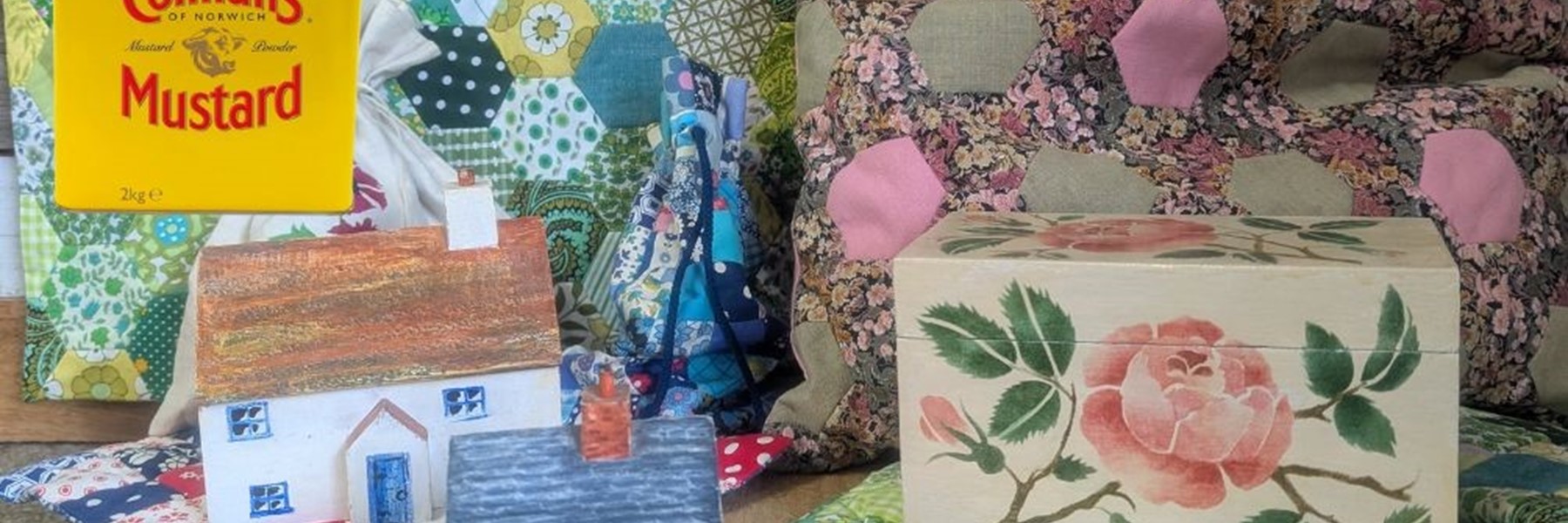A blog about crafting by Louisa Sheppy
Behind this ambiguous word hides a multitude of levels of skill, pleasure and satisfaction, but the type of craft I’m talking about is what we used to call “handicrafts”. In this world of bigging-up the importance of everything with meaningless titles and elevated words, the word “handicraft” is hardly going to cut it nowadays, but call it what you like, the pleasure of crafting simple things with basic learned skills is of much more importance than we give it credit for.
Having grown up the daughter of a dressmaker who was an artist and someone who could see the craft potential in everything and who was very experimental, I and my siblings spent many hours making things (there always seemed to be time then). She made dolls houses, and their furniture, tapestry, embroidery (always her own patterns), she painted (flowers and landscapes), she did stencilling (cutting her own designs, obviously), Christmas cards and even made her own paper and many other things. I remember her looking at a little square mustard tin and saying “that would make a perfect dolls house stove”, and she was right.
In those times patchwork was very fashionable, so we made cushions, bags, cot covers and bed covers; all sorts out of scraps of fabrics we and our friends had dresses made of, as well as fabrics from jumble sales. We cut our own backing papers from envelopes; hexagons and squares and went from there.
So why is it important? Well, for me keeping busy is what makes me happy, and I think that’s probably true for most people. So, the first benefit of craft is having something to do, especially when the nights draw in. Keeping my hands busy gives my brain a rest because I have to focus on my motor skills and, according to what you do, there is always a design element as well; what are you going to end up with and what do you want it to look like?
Having kept yourself occupied, the next great thing, as you get to the end, is satisfaction. It really is so wonderful to be able to look at something and say “I made that”; how much can you physically point at, at the end of your day at work and say that? You have something in your hand which you can be proud of; maybe a gift or something you can use.
If we take patchwork as an example, you have set yourself a target, persevered with it, given your mind some peace, honed your skills and now to crown it all you have something beautiful to enjoy and congratulate yourself about. But for us there was another magical benefit. All those scraps sewn into a bedspread were subjects of happy reflection remembering friends, dresses and occasions past over which we could laugh while sitting on mother’s bed telling her about our adventures the night before.
Sadly, I haven’t inherited my mother’s artistic skills, but many crafts don’ need this. I did tatting (shuttle-made lace) and made sugar flowers for cakes; these didn’t need real art, they were really craft processes and were so achievable and satisfying. Somehow in my busy life nowadays they don’t seem useful enough, so now the garden is becoming more out of bounds it’s time to find something new to fill the darkening evenings. I’m planning to weave a willow fence around my vegetable garden, so I can start planning that. What will you do?
image attached of some of the crafts Louisa did with her mother.





